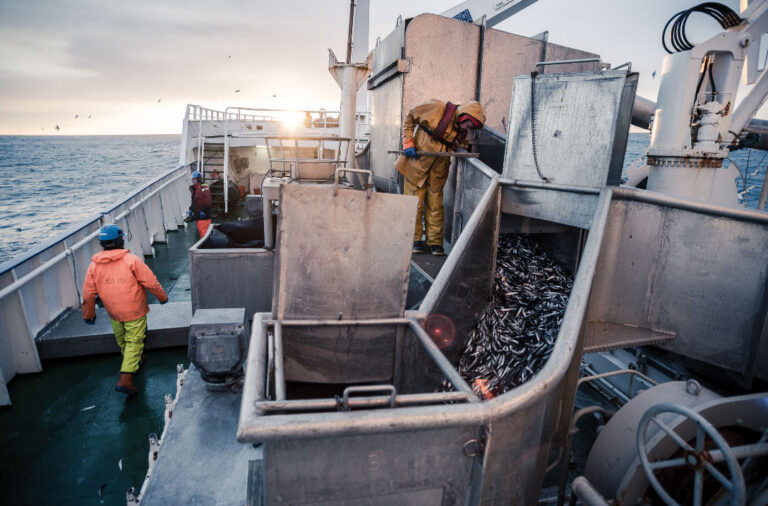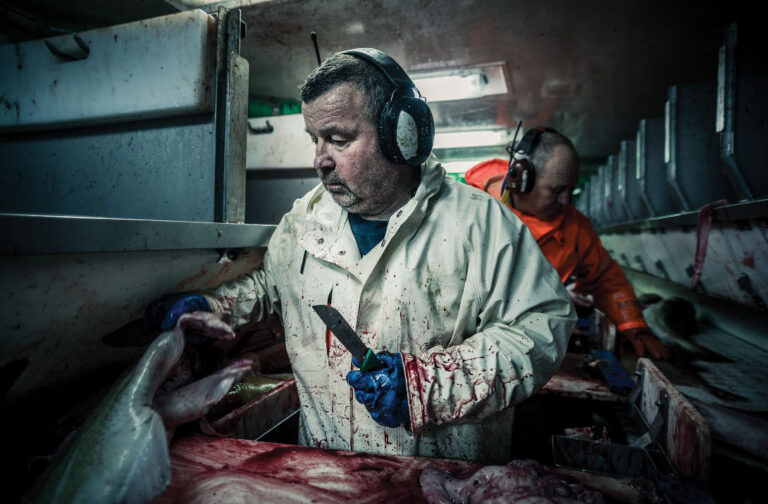



WHY ICELANDIC SAILORS?
I come from a small fishing town in Portugal, and, as a documentary photographer, the sailor’s life has always fascinated me. I was working for National Geographic Portugal and shot a series about the sailors there. Those photographs got a lot of attention and I turned it into a book with the help of a fishing company in Portugal. They were always telling me about Icelandic sailors and showing me photos of the harsh conditions. So I got curious and decided to come to Iceland to explore the sailors in the Arctic Sea.


WHAT IS IT YOU WANT TO EXPRESS WITH THESE IMAGES?
The sea around Iceland can get very violent but the conditions on board the ships are very good and I always felt safe, even in really bad weather. But no matter how good the conditions are, it’s still a very hard job to be a sailor. And this was one of the things I wanted to capture, the hardship of this profession. They are fighting the elements everyday, working in cold, wet and windy conditions, sleeping irregularly, and are far away from their families often for a long time. On the other hand, fishing is something that Icelanders have always done and is deeply rooted within the Icelandic culture. My aim is to show not only the fishing itself, but also the importance of the profession in the Icelandic culture and economy.

NOW THAT YOU’VE HAD YOUR TURN ON BOTH PORTUGUESE AND ICELANDIC FISHING BOATS, HOW DO THEY STACK UP?
The Portuguese fishermen travel all the way to Canada to fish while the Icelanders stay closer to home. The conditions on the boats are much better in Iceland and the safety standards are much higher. They follow stricter safety regulations. The most beautiful difference, though, is that in Iceland sailors are heroes and highly respected within society, but in Portugal it’s very different. Fishing is seen more of as a lower class job. I also found that Icelandic fishermen are much more knowledgeable about their profession. They know a lot about the sea and the fish they are fishing. They are true experts.

Pepe is still fascinated with this subject. His book “Lifeline,” which he made with the fishing company Skinney-Þinganes, is part of a bigger project called For Cod’s Sake.